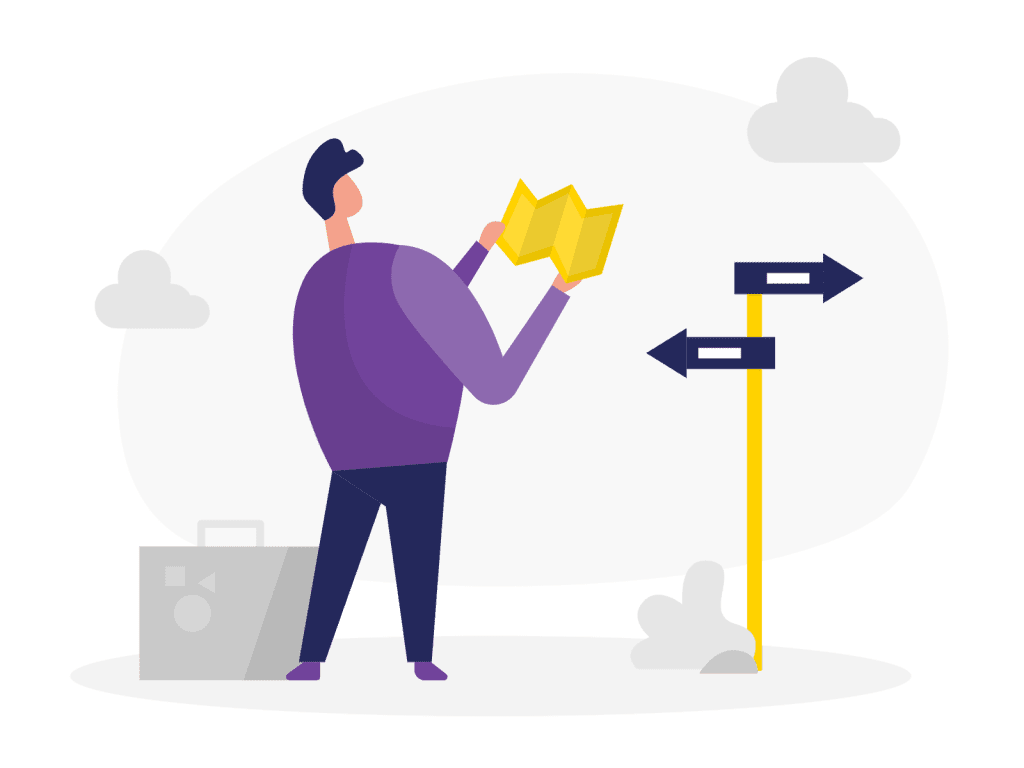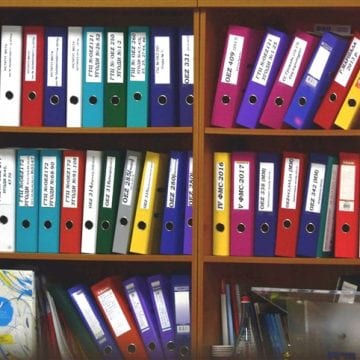Although many may still be reluctant to admit it, we now live in a digital world. Technology and software now exist to help us in almost every aspect of our daily lives, so incorporating it into the office is a natural step. Yet, many companies are still using outdated ways of collecting and storing data and reports, often wasting precious time and money. When it comes to creating and filing electronic reports, and finding ways to automate data collection it can be difficult to find solutions that are cost-effective, scalable and simple to use. This is likely the reason that some companies are still using older methods of data collection and storage. However, there are ways to create a paperless office that don’t require high starting and ongoing costs.
.
Issues with collecting and filing data the “traditional” way
Although automating data collection and storage can be costly, many hidden costs are associated with “traditional” methods. Paper and ink supplies aren’t cheap, especially if you use them on a large scale. Filing cabinets and other systems can also be expensive and take up a lot of space. Besides, paper files aren’t easily shareable or able to be used by several people at once. Paper files can be messy, things can get lost and files aren’t searchable. Digital files are also much easier to recover in the event of a fire, flood or another disaster, paper files can be easily destroyed in such a manner. There are many ways that paper is slowly becoming a thing of the past in the office environment and for good reason.

How can companies collect and file their data digitally?
Easily, by choosing an all-in-one software that takes into account everything needed to automate reporting, surveys and forms. Automation software usually comes with several catches, usually based around pricing and features. Many software providers charge companies at every opportunity for using their software, making automation an expensive solution. It isn’t uncommon to have to pay extra to use the software on additional devices, adding users to accounts or use different types of surveys or forms. Finding a cost-effective solution isn’t easy, especially one that has the features needed to successfully create electric reports and unlimited surveys. Fortunately, Tapapp is the ultimate solution for those looking to introduce a cost-effective, secure and flexible software into their operations.
.
A cost-effective solution
Unlike other providers, Tapapp’s solution doesn’t cost a fortune to set up and run. The pricing strategy is based around stored and collected data, as opposed to the number of users, devices or surveys used. This means that the overall running of the software doesn’t result in unexpected or unfair costs. With such flexibility, it allows companies to truly tailor their surveys and reports to their exact requirements, allowing them to test different methods without having to be concerned about the costs. Surveys and forms are unlimited and allow users to incorporate 22 question types.
.
.
Organise data effectively
Tapapp users are also able to share notes on forms and responses with their colleagues and customers simply and flag their favourite responses. The automatic timestamps that apply to the data are a great feature to keep everything in order, as is the geolocation tags that are applied to data to organise it by the location where it was sourced. Exporting data for analysis is also a simple process, with the option to export in a variety of formats, such as PDF, CSV and Excel. Tapapp also features several analytical tools, allowing users to analyse data easily through the app or get a quick visual overview.
.
Using mobile devices to go paperless
Data collection and reporting becomes simpler when many steps of the process are automated. There are several ways that companies can increase their output by making small changes towards achieving a paperless environment. Using tablets and mobile devices to collect data through surveys is becoming increasingly popular. Tapapp allows users to run their software on both iOS and Android devices and don’t require an internet connection, with surveys, forms and data available to view and complete offline. Preparing your workplace for the move to paperless doesn’t have to be difficult, using the right software and following a few simple steps can make the process effortless.

Tips for easily moving to paperless
1. Get rid of outdated machinery
Surprisingly, some businesses are still using fax machines as part of their daily operations. This isn’t only an outdated way to share files, but it’s also inefficient and necessarily uses paper, which then needs to be filed separately. Old bulky machinery can make your office look untidy and also take up valuable space that could be used more effectively.
2. Digitalise old files
Although the process may be time-consuming, digitalising your old files will save you time in the long run. To do this, you’ll just need a scanner, a computer and cloud storage to keep your files secure. By doing this, you’ll ensure that your files can always be recovered easily, even if there’s a fire or flood in your office. To speed up the process, invest in several scanners, these can be sold once you’ve finished with them and integrated fully digital solutions into your workplace.
3. Ditch old filing cabinets
Removing your old filing cabinets can feel very freeing, it’ll also give you more space. You could use the new space to revamp your working environment, making it more inviting for workers and clients. Keeping your premises up-to-date can give off a better impression to clients and also boost morale among your team.
4. Integrate automated solutions
Setting up automated solutions to become part of your day-to-day operations is key in successfully switching to a paperless workplace. This means ensuring that you have systems like Tapapp in place and that you’re familiar with how it operates and how it fits in with your operations.
5. Train and inform
To successfully go paperless, you’ll need to make sure that all staff are on board and understand what this means. Training staff on how to use the new system is important, as is informing them of what the protocol is when it comes to using paper. Some offices are fully paperless, meaning they use whiteboards in place of paper and input data into systems as required. Other offices still use paper in some circumstances. Deciding whether you’ll go fully paperless is important and informing your staff of your decision and what this means can help things go smoothly. Training staff to create electronic reports, surveys or other field-based reports is simple when using Tapapp.
6. Work paperless into your budget by choosing flexible solutions
The costs of going paperless can add up easily, particularly if you choose an automation system that charges for the number of reports and surveys created and for using certain features. Systems that don’t offer a level of flexibility should be avoided as they can be both costly and difficult to budget for. A flexible solution like Tapapp allows unlimited users and surveys, meaning it’s both scalable and affordable. As you’ll only pay for the data that you store and collect, it is simpler to create budgets for data collections or reports and stick to them with the transparent pricing strategy.

The main benefits of going paperless
Once you choose to go paperless with your reporting, the benefits will quickly show. After implementing the necessary steps and getting staff on board, the reasons why going paperless is a great option will be noticeable in various areas of your business.
1. Operating more efficiently and productively
Many companies are unaware of how much time can be spent searching for files when using paper-based filing systems. Retrieving files and transporting them to colleagues or sending them to customers can be a process that can be simplified through automation. Automation allows staff to make the best use of their time and productivity levels are likely to increase as a result of this.
2. Happier customers
If your company has a customer service department then accessing information to quickly respond to customer enquiries will be simplified by using digital systems. Searching for customer information or stored data will only be a few clicks away, meaning staff will no longer need to search through paper files. An efficient system can keep customers happy and mean that they’ll be more likely to return in future and recommend your services to others.
3. More secure data
Not only will files be more accessible, but they’ll also be more secure. This means that data will only be accessible to those that are permitted to view it. This is particularly important when working with personal details and also means that if an intruder enters your workplace, they will be unable to view confidential files.
4. Your company will become more environmentally friendly
Choosing environmentally sensible options can be a substantial factor that positively affects your company image. More people are becoming aware of environmental issues, choosing sustainable options and gravitating towards companies that follow environmentally friendly practices. By going paperless, you can recycle your old files and prevent the need for using as many consumables, which will also have an impact on your consumables budget.
5. Enable remote working
The benefits of remote workers are quickly becoming evident in many companies that have chosen to allow their staff to work from home. Having a workforce that can operate remotely can save your company a substantial sum. For example, having a large number of remote workers means that you require less office space and your office operating costs reduce significantly. However, without providing staff with the ability to remotely access data, working in this way can be challenging.
6. Simpler auditing
A digital paper trail is much simpler to follow than a physical one. Digital paper trails allow you to see exactly who has accessed files and made changes to them. This makes auditing and identifying errors easier and means that files can be effortlessly accessed when requested for audits, with a clear digital trail.
7. Greater collaborative opportunities
Providing staff with the ability to access files simultaneously means that collaborating on projects is simplified. This is particularly true when using Tapapp, as users can share internal notes with their colleagues, allowing multiple users to work on files together. Digital access also means that staff can work on projects together from remote locations, or that your company can collaborate simply with another company or client.
8. Quick and free access
Sending data via post can be very costly, especially if you are sending it by special delivery. Postage fees becoming a thing of the past in a paperless office, and access to files is instantaneous. Users with the right permissions can quickly access any files that they require and share these easily with others, even those on the other side of the world.

Summary
The benefits of going paperless are endless, choosing to use outdated methods in this ever-developing digital world can harm all areas of your business. It is important to look at the bigger picture and realise that switching to paperless is a positive change that can not only have an impact on your budget but also on productivity, customer relations and even staff morale. Relying on paper files and reporting can put your company at a disadvantage compared to your competitors that could be using modern practices and reaping the rewards for doing so.
Although there are costs that come with switching to paperless, Tapapp allows companies to easily switch without huge expenses. The flexibility of the pricing strategy and the number of features make it a cost-effective investment that quickly shows a substantial ROI. Investing in the solution can have both financial gains and positively impact operations in a variety of ways. The flexible nature of the software means that opportunities are endless and companies can reach their true potential. As the software is scalable, Tapapp is an excellent solution for companies of all sizes.
More in our blog:



